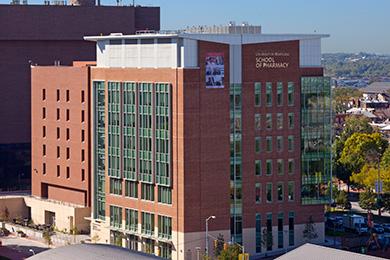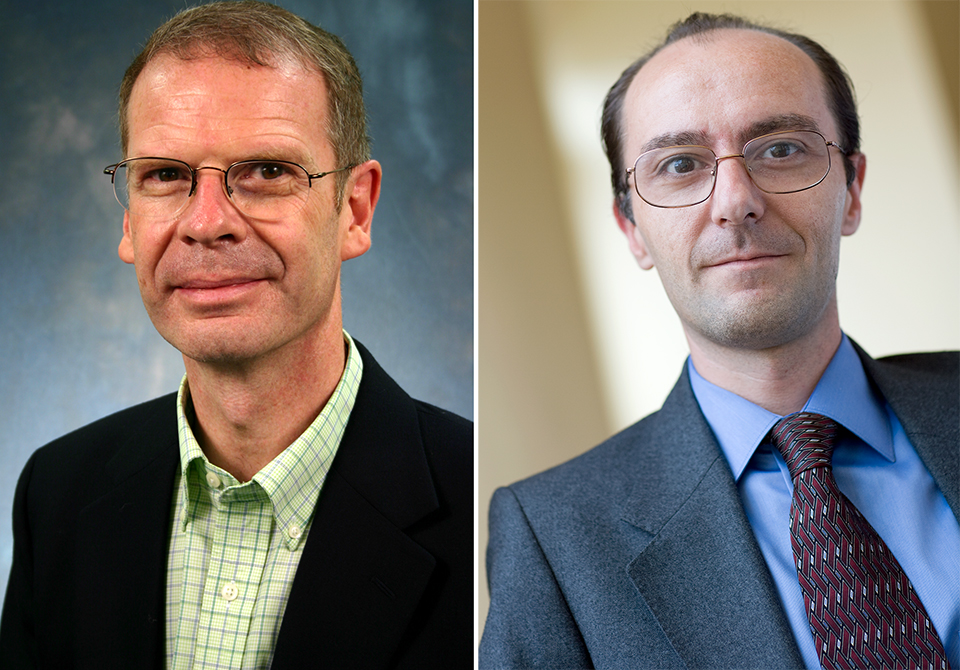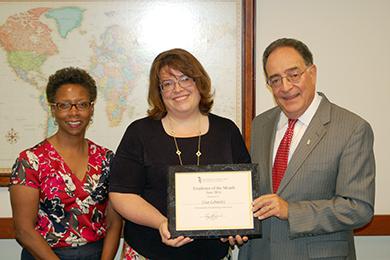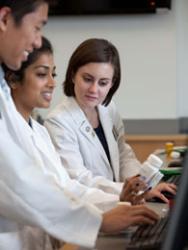School of Pharmacy Receives AACP’s Excellence in Assessment Award
Award recognizes School’s dedication to improving pharmacy education through the development and application of evidence-based practices in its annual assessment program.

By Malissa Carroll
August 7, 2014
The American Association of Colleges of Pharmacy (AACP) has named the University of Maryland School of Pharmacy as a recipient of its 2014 Excellence in Assessment Award. Presented to up to three schools of pharmacy each year, this award recognizes outstanding Doctor of Pharmacy (PharmD) assessment programs for their progress in developing and applying evidence of outcomes as part of their ongoing evaluation and improvement of pharmacy professional education.
Recipients are selected for the prestigious award based on five criteria: articulation and evidence of outcomes, success with regard to outcomes, using outcomes for improvement, disclosure of results, and dissemination of assessment knowledge. The organization also gives consideration to programs that provide evidence of a culture of assessment, including widespread faculty and administrative involvement, use of good research practices, and approaches that can be replicated at other institutions.
“The School of Pharmacy is honored to be recognized by AACP as a leader in programmatic assessment,” says Richard Dalby, PhD, associate dean of academic affairs and professor in the Department of Pharmaceutical Sciences (PSC) at the School. “Over the last several years, we have strived to develop a true ‘culture of assessment’ at the University of Maryland, Baltimore (UMB). Our faculty members focus on best practices in teaching and assessment to continuously improve our PharmD curriculum.”
According to Lisa Lebovitz, JD, assistant dean for academic affairs, the end-of-semester assessment process is effective because it is “simple and consistent” and “could be easily utilized by other schools of pharmacy regardless of their current records and registration and survey systems.” The metrics and benchmarks include comparable academic performance between the School’s Baltimore and Shady Grove campuses, 80 percent course evaluation completion rate, and 100 percent documentation of course review by course managers, faculty, and department chairs and vice chairs to close the feedback loop.
“The School’s PharmD curriculum is designed to ensure that learning experiences are as identical as possible for students at both the School’s Baltimore and Shady Grove campuses, as required by the Accreditation Council for Pharmacy Education (ACPE),” says Lebovitz. “Our grade analysis monitors the curriculum’s effectiveness in each course every semester. Class ranks are generated from the grade data and sent to students to promote private reflection and to help them develop self-awareness about their academic standing as benchmarked against their peers. Faculty are also provided with their overall instructor rating in relation to all faculty teaching within the semester.”
She adds, “In the last six semesters, the overall course evaluation response rate has consistently ranged between 67-78 percent each semester, which is exceptional for an online, voluntary system that does not offer points or other incentives for completion. Students are willing to complete the evaluations because they know that their perspectives are heard and valued, and they know that faculty members are actively engaged with continually improving their courses and teaching effectiveness.”
The award was presented to the School at AACP’s Annual Meeting, held July 26-30 in Grapevine, Texas.
“AACP congratulates the University of Maryland School of Pharmacy for its dedication to engaging faculty, students, and administrators in the assessment process,” said one member of AACP’s award selection committee. “The current assessment program not only allows students to see how they compare to others in their class, but also offers a good example of how faculty can use different technologies to improve student performance. We cannot wait to see how the School plans to disseminate this data to clearly illustrate to others the impact that this process has made and the changes that it has effected on the PharmD curriculum.”



